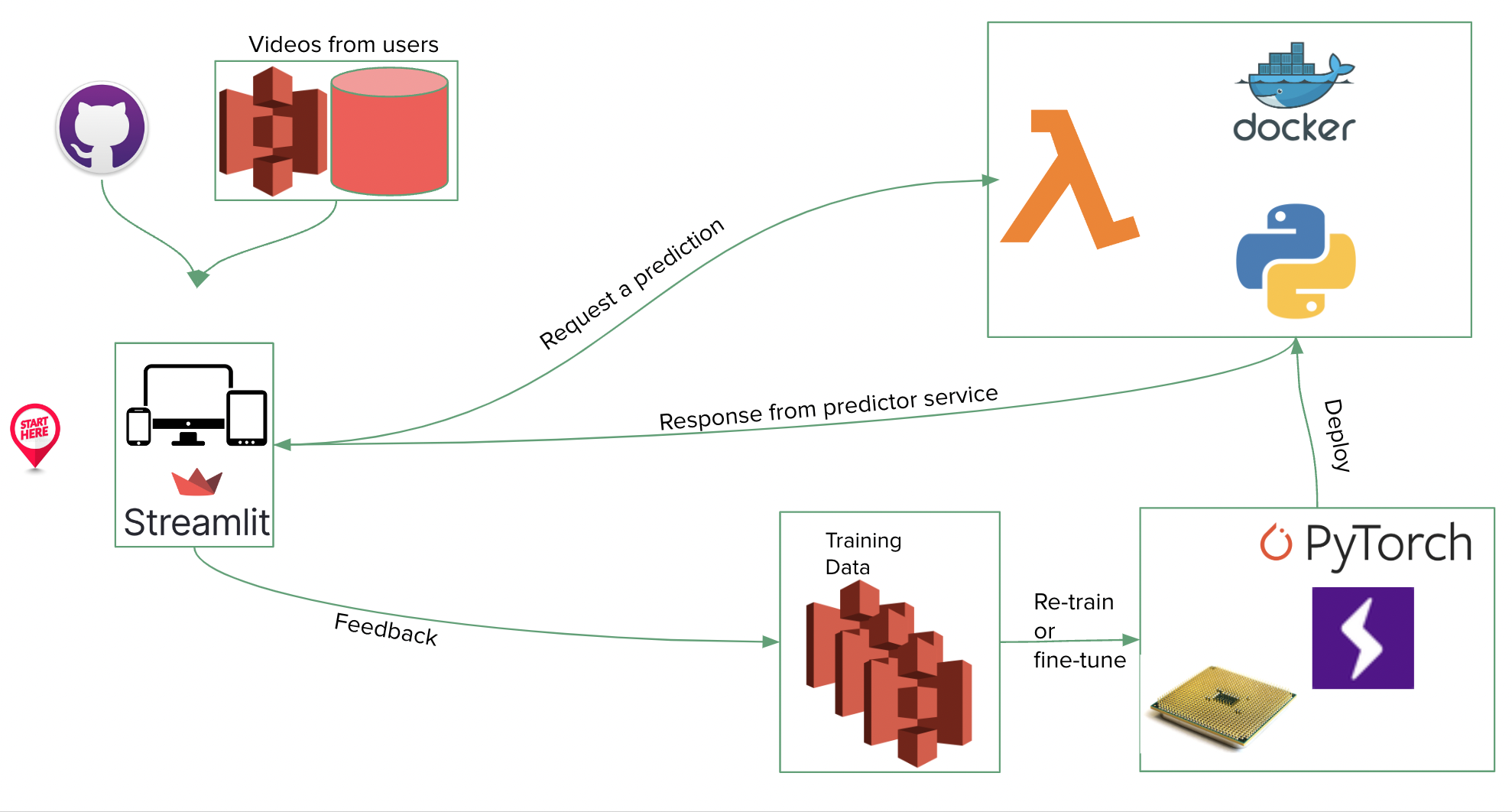This repository contains the code to run a Streamlit app that takes in:
- A video URL pointing to an .mp4 file of a person doing a sign
- An .mp4 file containing a person doing a sign
- A short webcam recording of yourself doing a sign
and it returns the predicted word/text for that sign. Currently this works at the word-level only.
Demo App: https://gesto-ai-model-serve-app-video-app-vs3664.streamlitapp.com/
Demo Video: https://youtu.be/TuRSicQgn68
Model: Inception I3D
Dataset: Word-Level American Sign Language (WLASL homepage)
System Diagram:
- Data is stored in AWS S3.
- The torchscript model is packaged in a predictor service and served on an AWS Lambda function.
- The UI/frontend is hosted on Streamlit.
- There's a user feedback collection feature that stores user predictions in a CSV file in AWS S3.
For more information, take a look at our presentation slides.
Built for the 2022 Full Stack Deep Learning (FSDL) class by Shivam Arora, Daniel Firebanks-Quevedo, Pablo Oberhauser, Dhruv Shah, Ibrahim Sherif, and Samuel Tang.
- Python 3.9
- A virtual environment
In a virtual environment (this was tested in a conda environment), install the required packages from the requirements.txt file:
pip install -r requirements.txt
The script currently expects the model weights to be stored in model_serve/artifacts/sign-recognizer/model.pt. You can download the model weights from here
streamlit run app.py
We can test the prediction server logic without deploying to AWS. NOTE: If you run this in your local machine, it will probably timeout - so make sure to run it in a GPU-powered machine!
- First, comment out the line
include .envin the Makefile, unless you have a.envfile with the expected information. - Build the docker image
# If you're on an M1 mac, run `make build_m1` instead
make build
- Run the container locally
make run
- In a different terminal session, run a local test with the demo video by sending a POST request to the running container.
make test_local
Sources:
- Creating Lambda container images
- Deploying Lambda functions as container images
- Notebook with detailed steps to deploy to AWS Lambda
Running the deploy process from start to finish (Currently not supported unless you have an AWS acccount connected)
Pre-pre requisites:
- Have an AWS account, with a secret key/secret access key
Pre-requisites (for the sign-recognizer app, these have already been created):
- Create a repository in the AWS Elastic Container Registry (ECR)
make create_ecr_repository
- Create an AWS Lambda function (will take a bit and may ran into timeouts)
make create_lambda
The following commands will:
-
Build a Docker image
-
Push it to AWS ECR
-
Update the Lambda function with the newest image
-
Get the status of the Lambda function update
-
If you’re on an M1 Mac, run:
make full_lambda_deploy_m1
- Else, run:
make full_lambda_deploy
